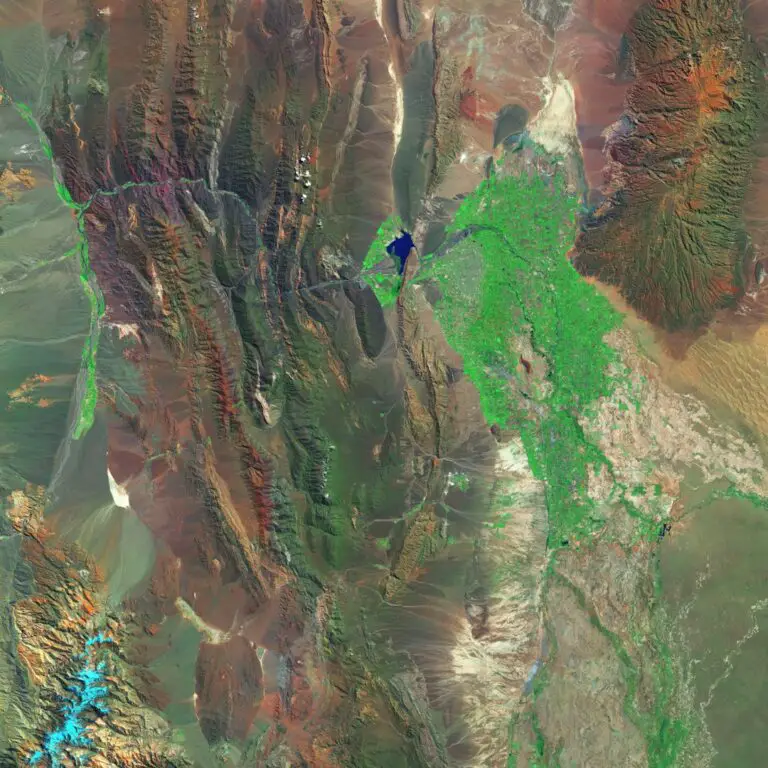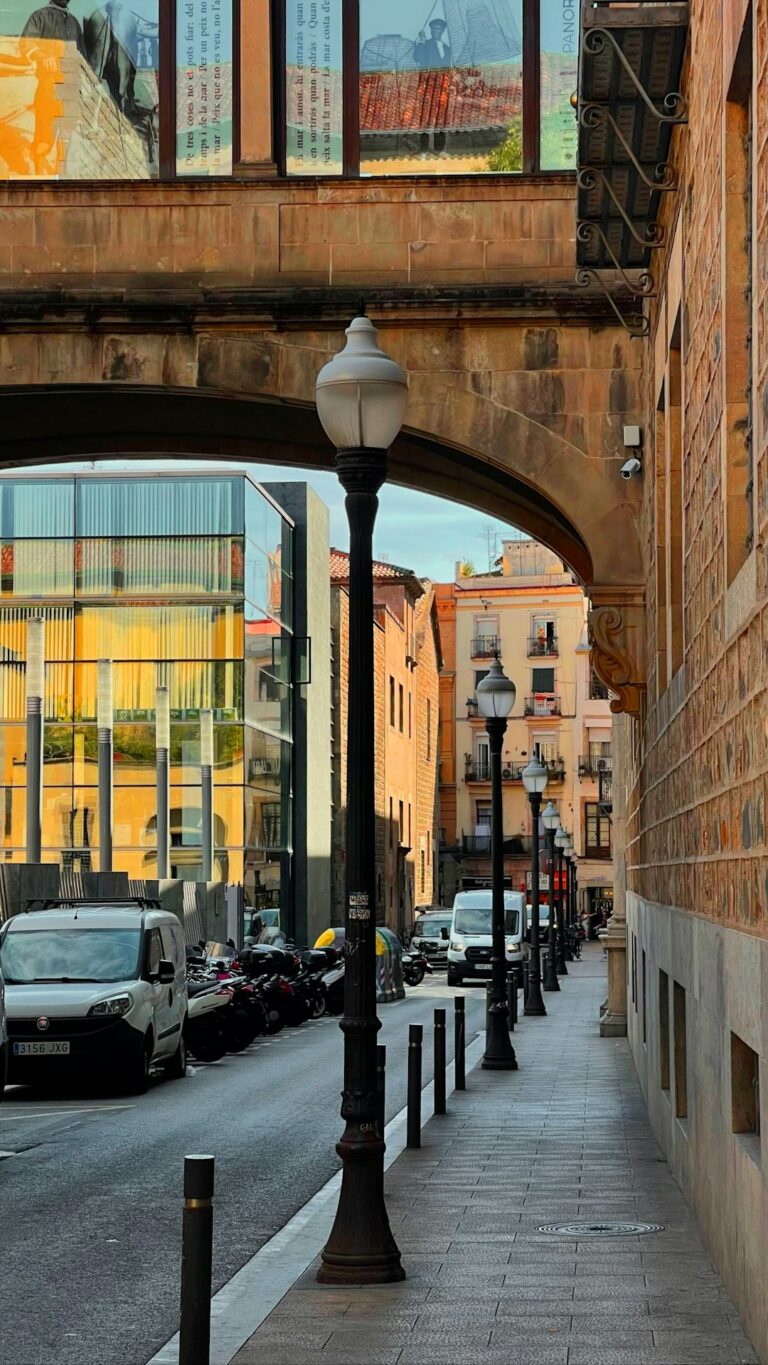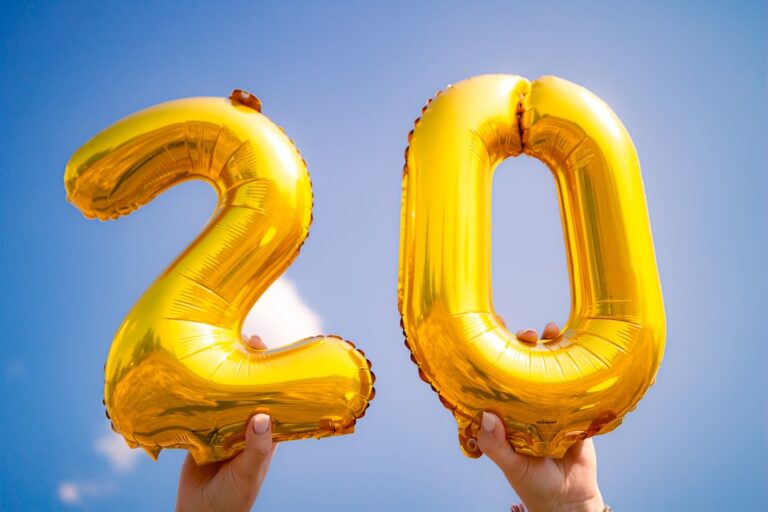Support our educational content for free when you purchase through links on our site. Learn more
¿Cómo se dice Good Morning en español? 45 Respuestas Imperdibles ☀️ (2025)
¿Sabías que decir “Good Morning” en español no se limita solo a un simple “Buenos días”? En realidad, hay más de 40 formas distintas de saludar por la mañana, ¡y cada una tiene su propio toque cultural y contexto ideal! Desde saludos formales hasta expresiones coloquiales y regionalismos llenos de sabor, este artículo te llevará de la mano para que nunca más te quedes sin palabras al empezar el día en español.
Imagina llegar a una reunión en Madrid y decir “¡Buen día, crack!” o responder a un colega en Bogotá con un cariñoso “¿Cómo amaneciste?”. ¿Quieres sonar natural, evitar errores comunes y hasta aprender respuestas creativas para “Buenos días”? Sigue leyendo, porque aquí descubrirás todo eso y mucho más, incluyendo consejos de pronunciación, cuándo usar cada expresión y cómo practicar con tutores nativos para acelerar tu fluidez.
Key Takeaways
- “Buenos días” es la forma clásica y más usada para decir Good Morning en español, pero existen más de 40 variantes para diferentes situaciones y regiones.
- El contexto y la hora del día son clave: usa “Buenos días” hasta el mediodía, luego cambia a “Buenas tardes” o “Buenas noches”.
- Respuestas a “Buenos días” pueden ser formales, casuales o creativas, desde un simple “Buenos días, ¿y tú?” hasta frases cariñosas o divertidas.
- Evita errores comunes como usar “buenos día” (singular) o saludar con “Buenos días” después del atardecer.
- Practicar con un tutor nativo en Preply puede ayudarte a sonar más natural y entender las sutilezas culturales.
¿Listo para dominar el arte de saludar en español? Sigue explorando y prepárate para impresionar con tus saludos mañaneros.
Table of Contents
- ⚡️ Quick Tips and Fun Facts About Saying Good Morning in Spanish
- 🌅 The Origins and Cultural Significance of “Buenos Días” in Spanish-Speaking Countries
- 🤔 How Do You Say “Good Morning” in Spanish? The Classic Translation Explained
- 🎉 40+ Delightful Ways to Say “Good Morning” in Spanish — From Formal to Fun!
- 💬 Mastering Spanish Greetings: Other Essential Morning Expressions and Responses
- ⏰ When and How to Use “Buenos Días” Correctly — Timing, Tone, and Context
- 🗣️ How to Respond to “Buenos Días”: Polite, Casual, and Creative Replies
- 📚 Common Mistakes to Avoid When Saying Good Morning in Spanish
- 🎯 Tips to Sound Like a Native When Greeting in Spanish
- 🚀 Boost Your Spanish Morning Greetings with a Preply Tutor
- 💡 Frequently Asked Questions About Saying Good Morning in Spanish
- 🔚 Conclusion: Brighten Your Day with Perfect Spanish Greetings
- 🔗 Recommended Resources and Links for Learning Spanish Greetings
- 📑 Reference Links and Further Reading
⚡️ Quick Tips and Fun Facts About Saying Good Morning in Spanish
Did you know that in most of Latin America, “Buenos días” is still totally acceptable at 11:59 a.m., but in parts of Spain people switch to “Buenas tardes” the second the clock hits 12:00? 🤯
Here are some lightning-fast facts you can drop at your next café con leche:
| Fact | ¿Por qué? | Quick Example |
|---|---|---|
| “Buenos días” is plural | From the old blessing “buenos días os dé Dios” (may God give you good days) | Say it loud and proud: ¡Buenos días, mundo! |
| “Buen día” is more common in the Caribbean | Shorter, breezier, beach-approved | ¡Buen día, mi gente! |
| “¿Cómo amaneciste?” literally asks “How did you dawn?” | A poetic way to ask “How did you wake up?” | Reply: ¡Bien, gracias! ¿Y tú? |
| Never say “Buenos días” after sunset | You’ll get a friendly eyebrow raise | After 7 p.m. switch to “Buenas noches” |
🔗 Need a refresher on the basics? Swing by our deep-dive on good morning in Spanish before you keep scrolling.
🌅 The Origins and Cultural Significance of “Buenos Días” in Spanish-Speaking Countries {#the-origins-and-cultural-significance-of-buenos-días-in-spanish-speaking-countries}
Picture medieval Spain: knights, castles, and monks strolling the stone corridors of El Escorial. They greeted each other with “Buenos días os dé Dios”—a mouthful that eventually slimmed down to the snappy “¡Buenos días!” we know today.
But here’s where it gets spicy 🌶️:
- In Mexico, you’ll hear “¡Buen día, güey!” among friends.
- In Argentina, “Buen día, che” carries that irresistible Porteño flair.
- In Costa Rica, it’s common to add “¡Pura vida!” after “Buenos días” to radiate good vibes.
According to the Real Academia Española, the plural form días stuck because mornings were seen as a collection of moments, not a single slice of time. Mind blown, right?
🤔 How Do You Say “Good Morning” in Spanish? The Classic Translation Explained
Short answer: “Buenos días.”
Long answer: It depends on who you’re talking to, where you are, and how many cafecitos you’ve had. 😉
| Context | Phrase | Pronunciation Tip |
|---|---|---|
| Universal, polite | Buenos días | BWEH-nos DEE-ahs (roll that soft r!) |
| Super casual | ¡Buenas! | BWEH-nas (drop the “días” entirely) |
| Caribbean & Andean flair | ¡Buen día! | bwen DEE-ah (stress the first syllable) |
| Phone call | Aló, buenos días | ah-LOH, BWEH-nos DEE-ahs |
Pro tip: If you’re on a Zoom call with a client in Bogotá, stick with “Buenos días, ingeniera”—titles matter! For your cousin in Barcelona, “Buen día, tete” (Catalan for “bro”) works like a charm.
🎉 40+ Delightful Ways to Say “Good Morning” in Spanish — From Formal to Fun!
We promised you more than 33, so here’s our mega-list—complete with usage notes and emoji flair. Bookmark this baby!
1–10: Formal & Professional
- Buenos días, señor García.
- Buenos días, estimada doctora.
- Buenos días a todos los presentes.
- Buen día, licenciada.
- Buenos días, ingeniero.
- Buenos días, señorita Rodríguez.
- Buenos días, excelentísimo señor.
- Buenos días, juez.
- Buenos días, miembros del jurado.
- Buenos días, distinguidos invitados.
11–20: Friendly & Neutral
- ¡Buen día, vecino!
- ¡Buenos días, compañeros!
- ¡Buen día, chicos!
- ¡Buenas, familia!
- ¡Buen día, profe!
- ¡Buenos días, clase!
- ¡Buen día, equipo!
- ¡Buenas, banda!
- ¡Buen día, gente linda!
- ¡Buenos días, amigos del alma!
21–30: Romantic & Sweet
- Buenos días, mi amor.
- Buen día, corazón.
- Buenos días, princesa de mis sueños.
- Buen día, rey.
- Buenos días, media naranja.
- Buen día, luz de mi vida.
- Buenos días, mi cielo.
- Buen día, bombón.
- Buenos días, mi vida.
- Buen día, cariño.
31–40: Playful & Creative
- ¡Levántate y brilla, crack!
- ¡Arriba que ya amaneció!
- ¡Buen día, campeón!
- ¡Buenos días, rockstar!
- ¡Buen día, artista!
- ¡Buenos días, máquina!
- ¡Buen día, superhéroe!
- ¡Buenos días, genio!
- ¡Buen día, fenómeno!
- ¡Buenos días, crack del universo!
41–43: Bonus Regional Gems
- ¡Buen día, parcero! (Colombia)
- ¡Buen día, mae! (Costa Rica)
- ¡Buen día, pana! (Venezuela & Caribbean)
💬 Mastering Spanish Greetings: Other Essential Morning Expressions and Responses
Let’s go beyond “Buenos días” and build your Spanish Conversation Practice toolkit. These phrases keep the chat flowing like a smooth café con leche:
| Expression | Literal Meaning | When to Use |
|---|---|---|
| ¿Cómo amaneciste? | How did you dawn? | First contact of the day |
| ¿Dormiste bien? | Did you sleep well? | Showing care |
| ¿Qué tal va tu mañana? | How’s your morning going? | Mid-morning check-in |
| ¡Que tengas un buen día! | May you have a good day! | Saying goodbye |
| ¡Feliz jueves! | Happy Thursday! | Day-specific cheer |
🔗 Explore more Spanish Vocabulary gems in our Spanish Vocabulary section.
⏰ When and How to Use “Buenos Días” Correctly — Timing, Tone, and Context {#when-and-how-to-use-buenos-días-correctly–timing-tone-and-context}
Timing Cheat-Sheet
| Region | “Buenos días” Cut-off | Safe Switch |
|---|---|---|
| Spain (Madrid) | 12:00 p.m. | Buenas tardes |
| Mexico (CDMX) | ~1:00 p.m. | Buenas tardes |
| Colombia (Bogotá) | ~12:30 p.m. | Buenas tardes |
| Argentina (Buenos Aires) | 12:00 p.m. sharp | Buenas tardes |
Tone & Context
- Formal email: Estimado Sr. López, buenos días. Espero que se encuentre bien.
- WhatsApp voice note to friend: ¡Buen día, loco! ¿Vamos al gym?
- Hotel reception (neutral): Buenos días, bienvenidos al Hotel Mariposa.
Insider story: Last summer in Seville, our colleague Marta greeted a shopkeeper at 12:03 p.m. with “Buenos días” and got a playful wink: “¡Ya es tarde, guapa!” Lesson learned—time is cultural!
🗣️ How to Respond to “Buenos Días”: Polite, Casual, and Creative Replies {#how-to-respond-to-buenos-días-polite-casual-and-creative-replies}
Polite ✅
- “Buenos días, ¿y usted?”
- “Muy buenos días, gracias por saludar.”
Casual 😎
- “¡Buenas! ¿Qué contas?”
- “¡Buen día, bro! ¿Todo bien?”
Creative 🎨
- “Buenos días, que el café esté fuerte y el lunes sea breve.”
- “¡Buen día! A darle que es mole de olla.”
Mini-dialogue:
María: ¡Buenos días, Carlos!
Carlos: ¡Buen día, Mari! ¿Dormiste con los angelitos?
María: ¡Sí! Soñé que ganaba la lotería. 😂
📚 Common Mistakes to Avoid When Saying Good Morning in Spanish
| Mistake | Why It’s Wrong | Quick Fix |
|---|---|---|
| ❌ Buenos día (singular) | Always plural | ✅ Buenos días |
| ❌ Buenas días | Gender mismatch | ✅ Buenos días |
| ❌ Saying it after sunset | Sounds odd | ✅ Switch to Buenas tardes/noches |
| ❌ Over-pronouncing the “s” | Sounds robotic | ✅ Soft “s” like “bweh-nos” |
🎯 Tips to Sound Like a Native When Greeting in Spanish
- Blend words: Buenos días often becomes “buendía” in rapid Caribbean Spanish.
- Add diminutives: ¡Buen día, mamita! (sweet & affectionate)
- Use local slang:
- Mexico: ¡Buen día, carnal!
- Chile: ¡Buen día, po!
- Body language: Light cheek kiss in Argentina, handshake in Mexico City, nod in Madrid.
Pro tip: Watch the YouTube video Pronuncia Good Morning, Afternoon, Evening, Night to nail the sounds—especially that soft Spanish “d”!
🚀 Boost Your Spanish Morning Greetings with a Preply Tutor
Ready to level-up beyond “Buenos días”? Our friends at Preply pair you with native tutors for Spanish Conversation Practice that feels like chatting with a friend over coffee.
What you get:
- Personalized feedback on pronunciation
- Cultural nuggets (like why “¿Cómo amaneciste?” is romantic in Colombia but odd in Chile)
- Flexible scheduling
👉 CHECK PRICE on:
💡 Frequently Asked Questions About Saying Good Morning in Spanish
Q1: Is **“Buen día” acceptable everywhere?
A: Mostly in the Caribbean and Andean regions. In Spain, stick to “Buenos días.”
Q2: Can I text “Buenas” to my boss?
A: Only if you have a chill, informal relationship. Otherwise, “Buenos días, ingeniera” keeps it safe.
Q3: What if I mess up the timing?
A: Smile and pivot: “¡Buenas tardes! Se me pasó el tiempo.” Self-deprecation wins hearts.
Q4: Any song to practice?
A: Yes! Check the featured video for catchy pronunciation drills.
🔚 Conclusion: Brighten Your Day with Perfect Spanish Greetings
And there you have it — your ultimate guide to saying “Good Morning” in Spanish and responding like a true native! From the classic “Buenos días” to playful regional gems like “¡Buen día, parcero!”, you’re now equipped to greet anyone with confidence, warmth, and cultural flair.
Remember, timing is everything: use “Buenos días” before noon, switch to “Buenas tardes” after, and sprinkle in affectionate or casual variations depending on who you’re talking to. Avoid the common pitfalls like singular forms or awkward timing, and you’ll sound polished and natural.
If you want to fast-track your fluency, a personalized tutor from Preply can help you practice these greetings in real conversations, giving you instant feedback and cultural insights.
So next time you meet a Spanish speaker, don’t just say “Good morning” — say it with style, heart, and a sprinkle of Spanish Scholar™ magic! ✨
🔗 Recommended Resources and Links for Learning Spanish Greetings
Ready to shop for the best Spanish learning tools and books to complement your morning greetings? Check these out:
-
Preply Spanish Tutors:
Amazon Search: Preply Spanish Tutor | Preply Official Website -
“Practice Makes Perfect: Spanish Conversation” by Jean Yates:
Amazon Link -
“Easy Spanish Step-By-Step” by Barbara Bregstein:
Amazon Link -
“Madrigal’s Magic Key to Spanish” by Margarita Madrigal:
Amazon Link -
Berlitz Spanish Essentials eBook:
Berlitz Official
💡 Frequently Asked Questions About Saying Good Morning in Spanish
¿Cómo se dice Good Morning en español de manera formal?
The formal way to say “Good Morning” in Spanish is “Buenos días”. This phrase is appropriate for professional settings, when addressing strangers, or showing respect to elders. You can add titles for extra politeness, for example:
- “Buenos días, señor Martínez.”
- “Buenos días, doctora López.”
Using “Buenos días” with formal pronouns like usted also elevates politeness. For example:
- “Buenos días, ¿cómo está usted?”
¿Cuáles son las respuestas comunes a Good Morning en español?
Common responses to “Buenos días” include:
- “Buenos días, ¿y tú?” (informal)
- “Buenos días, ¿cómo amaneciste?” (How did you wake up?)
- “Muy buenos días, gracias.” (Very good morning, thank you.)
- “¡Buen día!” (Good day!)
These replies keep the conversation flowing and show interest or politeness. You can also respond with a question to engage further, such as “¿Cómo dormiste?” (Did you sleep well?).
¿Cómo responder a Good Morning en español en un contexto casual?
In casual contexts among friends or family, you can reply with informal expressions like:
- “¡Buenas!” (shortened greeting)
- “¡Buen día, amigo!”
- “¡Qué onda! ¿Cómo amaneciste?” (What’s up? How did you wake up?)
- “Todo bien, ¿y tú?” (All good, and you?)
Feel free to add playful or affectionate terms like “¡Buen día, crack!” or “¡Buenos días, hermosa!” to sound warm and natural.
¿Qué otras frases se usan para saludar en español por la mañana?
Besides “Buenos días”, here are other morning greetings and expressions:
- “¡Buen día!” — Common in Caribbean and Andean countries.
- “¿Cómo amaneciste?” — A poetic way to ask “How did you wake up?”
- “¡Levántate y brilla!” — “Rise and shine!” (motivational)
- “¡Ya amaneció!” — “It’s already dawn!” (energetic)
These phrases add variety and cultural richness to your morning salutations.
¿Cómo se pronuncia Good Morning en español correctamente?
The standard pronunciation of “Buenos días” is:
BWEH-nos DEE-ahs
- The “b” is soft, almost like a “v” sound.
- The “d” in días is soft, similar to the “th” in “this” but softer.
- The accent is on the first syllable of buenos and on dí in días.
Listening to native speakers and practicing with a tutor or apps like Preply can help you perfect your pronunciation.
¿En qué situaciones se usa Good Morning en español?
Use “Buenos días”:
- From sunrise until noon (or early afternoon depending on region).
- In formal, informal, professional, and casual settings.
- When greeting individuals or groups.
Avoid using it after midday or sunset; switch to “Buenas tardes” or “Buenas noches” accordingly.
¿Dónde puedo aprender a responder saludos en español en línea?
You can learn to respond to Spanish greetings online through:
- Preply: Personalized one-on-one tutoring with native speakers.
- Spanish Scholar™: Offers free articles and conversation practice resources (Spanish Conversation Practice).
- Duolingo and Babbel: Apps with structured lessons.
- YouTube channels: Such as Butterfly Spanish or Dreaming Spanish for free video lessons.
Practicing regularly with native speakers is the fastest way to gain confidence.
📑 Reference Links and Further Reading
- Real Academia Española (RAE) – Buenos días
- Preply – Find Spanish Tutors
- Berlitz – How to Say Good Morning in Spanish in 33 Fitting Ways
- ThoughtCo – Spanish Greetings Vocabulary
- Spanish Academy – Common Ways to Say Have a Good Day
- YouTube – Buenos Días Song for Kids
Dive into these trusted sources to verify facts and deepen your Spanish greeting skills!




